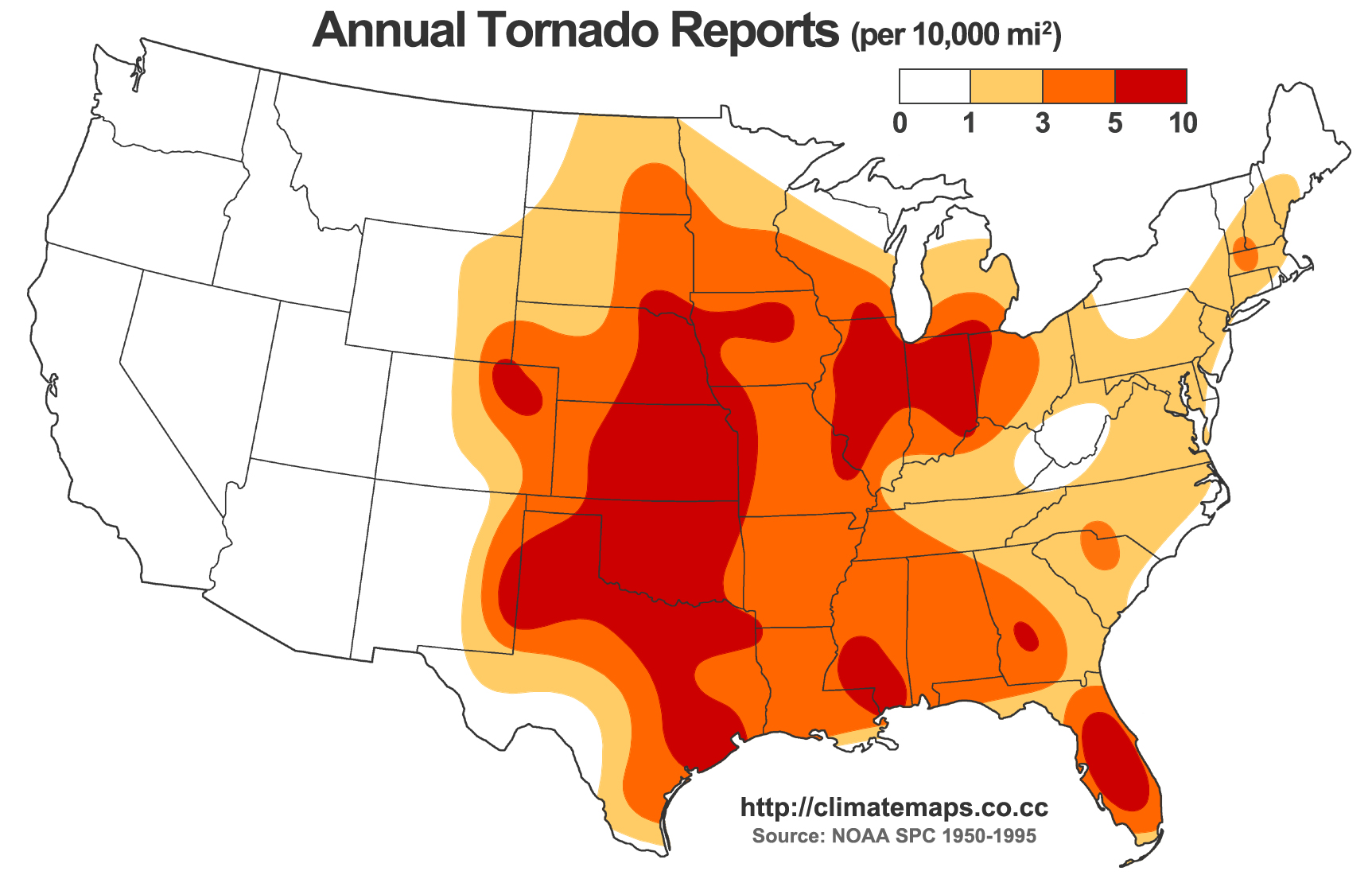The US mainland is thousands of miles away from the Arctic circle, but that does not mean the nation is immune to the steady loss of polar sea ice.
A new study suggests that despite the distance between these two regions, the impact of global climate change in the Arctic could have an unusual effect on severe storms in the US.
The results show a possible connection between atmospheric changes - brought about by a loss of Arctic sea ice - and an unexpected decrease in the number of tornadoes touching down in the US.
"A relationship between Arctic sea ice and tornadoes in the US may seem unlikely," says co-author Jeff Trapp, an expert in atmospheric sciences.
"But it is hard to ignore the mounting evidence in support of the connection."
Previous research has found that low Arctic sea ice has helped to promote extreme weather events in certain regions of the world. Trapp and his team wanted to figure out if this connection also extends to tornado activity, as the frequency of tornadoes in the US has been abnormally low in recent years.
The hunch appears to be well-founded. Looking at nearly three decades of historical weather and climate data, the findings reveal significant correlations between the scope of Arctic sea ice and the frequency and strength of tornado activity in the US.
In particular, the results show that when Arctic sea is low in the month of July, tornado activity in the same month is also anomalously low.
To be clear, this is just a correlation. There is no definitive evidence yet that changes in weather circulation can be specifically attributed to the extent of Arctic sea ice.
"… the data alone are insufficient to answer the question of whether the Arctic sea ice losses and associated lower-tropospheric temperature enhanced the atmospheric dynamics in July 1990–2015, or whether enhanced atmospheric dynamics drove larger ice losses," the study reads.
Even still, the authors have a few theories about what could be going on here. They propose that when Arctic sea ice decreases in the summer months, atmospheric conditions are also altered.
This peculiar alteration results in tornadoes occurring with less frequency in regions that historically experience a lot of summer tornadoes, like the Great Plains in the US.
The theory rests on the way Arctic sea ice is thought to control the path of jet streams, which are ribbons of high-speed wind related to the temperature contrast between the pole and equator.
Normally, as winter turns to summer, the cold air from the Arctic region begins to retreat to the north, dragging along both the jet stream and the tornado season with it.

Now, however, thanks to climate change, it looks as though the melting Arctic ice could also be pulling the jet streams north, altering the traditional path of tornadoes.
As the ice retreats, the jet stream was found to move from its traditional summer path over the states of Montana and South Dakota to areas further north, where conditions are more storm-friendly. In an interesting twist, the movement of the jet stream was also found to change the very quality of severe weather.
"Tornadoes and their parent thunderstorms are fueled by wind shear and moisture," says Trapp.
"When the jet stream migrates north, it takes the wind shear along for the ride, but not always the moisture. So, even though thunderstorms may still develop, they tend not to generate tornadoes because one of the essential ingredients for tornado formation is now missing."
The research is still in its infancy, and the team remains unsure why the correlation between Arctic sea ice and tornadoes is particularly evident in July.
"The further implication is that tornado formation in July is more sensitive to jet stream modulations; anecdotally, this is a common element of discussion by forecasters of severe convective weather," the authors hypothesize.
Nevertheless, the results suggest a fruitful area for more research. In particular, the authors want to explore how to use Arctic ice retreat and jet stream migration as a way to predict severe seasonal weather in the future.
"One of the reasons that we focused on sea ice is because, like the ocean and land, it is relatively slow to evolve," explains Trapp.
"Because sea ice and the atmosphere are coupled, the response of the atmosphere is also relatively slow. We can use this property to help make long-term predictions for tornadoes and hail, similar to the way predictions are made for hurricane seasons."
When it comes to understanding climate change, climate variability and severe weather, the researchers admit that they have only uncovered the very tip of the iceberg.
The study has been published in the journal Climate and Atmospheric Science.
Science AF is ScienceAlert's new editorial section where we explore society's most complex problems using science, sanity and humor.
